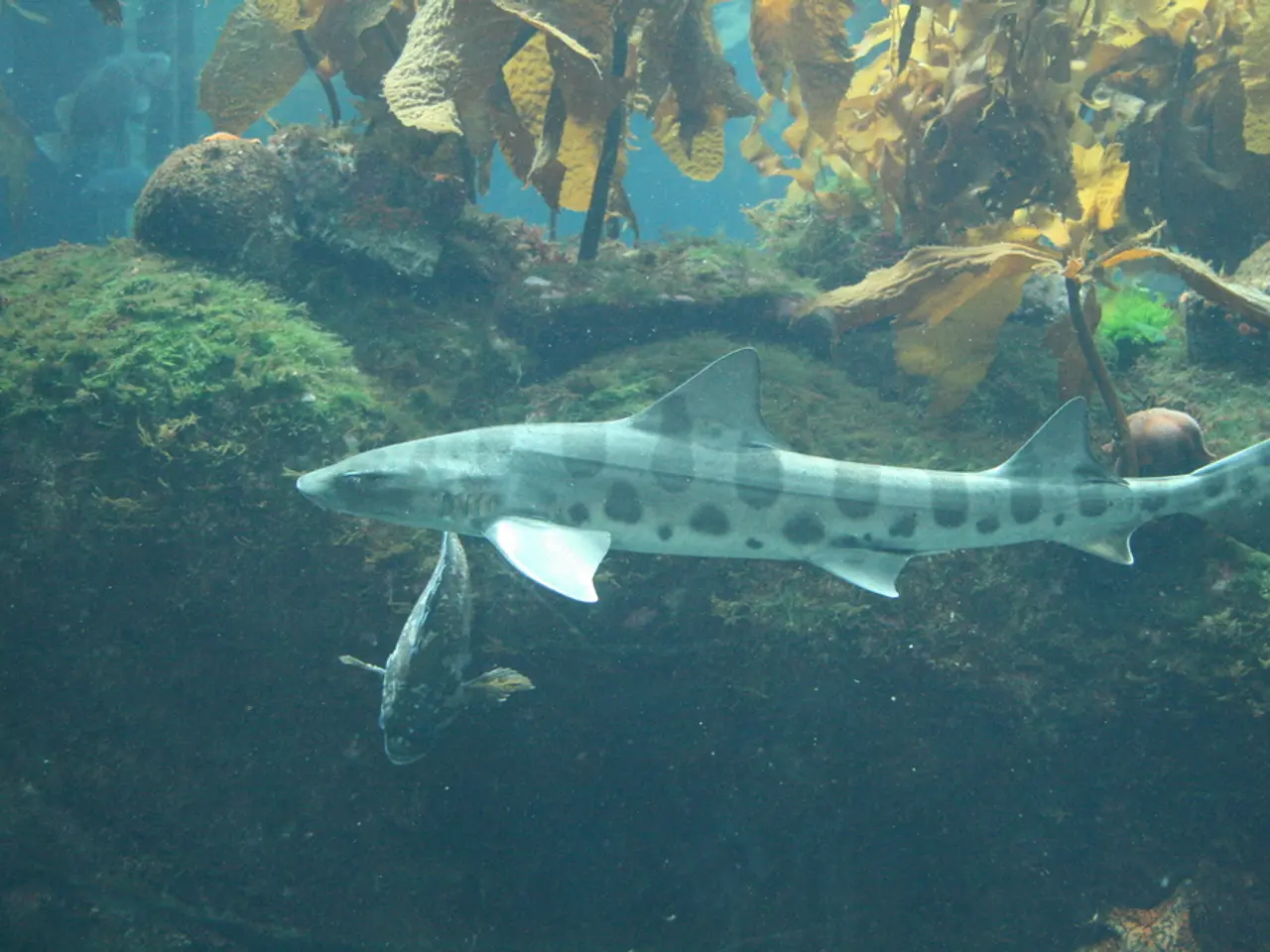Underwater Robot's Live Stream: Patrick Star and Cross-Dressing Crustacean Enthrall Argentine Viewers
A Deep Sea Adventure in the Mar del Plata Canyon
In the depths of the Atlantic Ocean, an exciting scientific mission is taking place. The Argentine-American deep sea exploration mission, named "Underwater Oases of the Mar del Plata Canyon," is led by Argentina's National Scientific and Technical Research Council (CONICET) in partnership with the California-based Schmidt Ocean Institute (SOI).
The Partnership and Funding
This mission is a unique collaboration between CONICET and SOI. SOI provides the advanced technology, such as the research vessel Falkor (too) and the remotely operated vehicle (ROV) SuBastian. This partnership represents a blend of public and nonprofit funding, combining Argentine national scientific resources with private U.S. nonprofit support.
Discoveries and Impact
The Mar del Plata submarine canyon, a unique ecological zone where the warm Brazil Current meets the cold Falklands Current, is the focus of this first comprehensive scientific investigation. The expedition has led to the identification of about 40 marine species, many previously unknown to science. One fascinating find is cold-water corals with striking colors similar to those found in the Caribbean.
Over 20 Argentine scientists from CONICET and various universities are involved, covering a wide range of disciplines including oceanography, taxonomy, ecogenomics, sedimentology, and more. The ROV is used to collect biological and geochemical samples, supporting research on species diversity, water conditions, sediment dynamics, and microplastic presence.
The results and data from the expedition will be made publicly accessible through open platforms such as CONICET Digital, OBIS (Ocean Biodiversity Information System), and GenBank.
Engaging the Public
The mission is live-streamed globally, attracting tens of thousands of viewers daily and spreading knowledge about ocean biodiversity in real time. This open-access model and international collaboration exemplify a modern approach to marine research, blending cutting-edge technology, capacity-building within Argentina’s scientific community, and global outreach.
A Beacon of Hope
During a difficult time for science in Argentina, with CONICET facing severe underfunding, the popularity of the broadcast is a "beacon of light" for science, according to Tomas Atilio Luppi, a biologist at the CONICET-affiliated marine and coastal research institute.
As the mission continues, it promises to reveal more about the deep sea and inspire a greater appreciation for the ocean and its wonders. The exploration ends on August 10, but the impact of this mission will be felt for years to come.
[1] Schmidt Ocean Institute. (2023). Underwater Oases of Mar del Plata Canyon. [online] Available at: https://schmidtocean.org/expedition/underwater-oases-of-mar-del-plata-canyon/
[2] CONICET. (2023). Mar del Plata Canyon Expedition. [online] Available at: https://www.conicet.gov.ar/noticias/mar-del-plata-canyon-expedicion
[3] SOI. (2023). Mar del Plata Canyon Expedition. [online] Available at: https://oceanexplorer.jpl.nasa.gov/missions/3034/mar-del-plata-canyon-expedition/
- This unique exploratory endeavor in the Mar del Plata Canyon, a blend of environmental-science and technology, is enabling us to uncover new insights about the deep sea, potentially impacting climate-change research.
- The partnership between Argentina's CONICET and the California-based Schmidt Ocean Institute (SOI) represents a symbiotic union of environmental-science, education-and-self-development, and career-development, as it fosters the growth of a future generation of scientists.
- Owing to the live streaming of the mission on social media, pop-culture and general-news outlets have been communicating the wonders of the deep sea to millions daily, fostering a growing appreciation for the environment.
- As the exploits of the Mar del Plata Canyon expedition incites awe and wonder, the role of politics lies in ensuring adequate funding for similar projects, safeguarding the future of science and technology.
- Moreover, the findings from this mission, once published in platforms like OBIS, GenBank, and CONICET Digital, can pave the way for advancements in entertainment, particularly within the realm of virtual reality and augmented reality, allowing us to explore and appreciate the majesty of the deep sea like never before.




